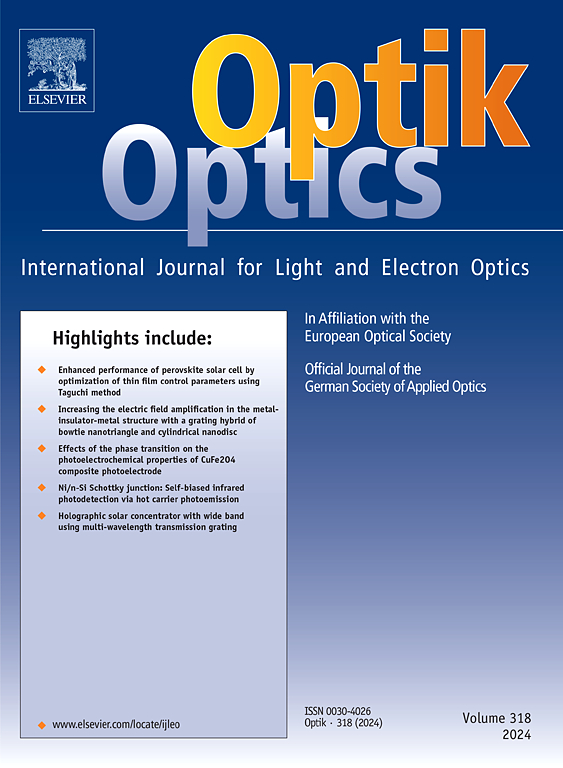Temperature measurement with compact Fabry-Perot Interferometer employing polymer-filled Hollow Core Fiber
IF 3.1
3区 物理与天体物理
Q2 Engineering
引用次数: 0
Abstract
This research proposes and experimentally demonstrates a polymer-filled Hollow Core Fiber (HCF) based compact Fabry-Perot Interferometer (FPI) for temperature sensing. The two beams: one reflectd at the interface between multimode fiber and the hollow core fiber and the other beam reflected at the interface between the hollow core fiber and the thermosensitive polymer form the Fabry-Perot cavity. The thermosensitive material filled in the core of the HCF acts as the sensing element. The HCF core is partially filled with transparent photopolymer, which has high Thermo-Optic Coefficient (TOC) and Thermo-Expansion Coefficient (TEC) as compared to silica, therefore it can provide high temperature sensitivity. The temperature sensitivity of the proposed FPI sensor can reach up to 53.5 pm/℃. The results indicate that the polymer-filled hollow-core fiber based FPI offers a promising approach for achieving high temperature sensing than pure silica based sensors. The proposed device consists of compact design with easy and low-cost fabrication. Moreover, the temperature measuring device provides stable and linear output response and brings numerous prospects for ocean temperature measurements, food, medical and chemical sensing applications.
温度测量与紧凑的法布里-珀罗干涉仪采用聚合物填充空心芯光纤
本研究提出并实验演示了一种基于聚合物填充空心芯光纤(HCF)的紧凑型温度传感法布里-珀罗干涉仪(FPI)。两束光束:一束在多模光纤与空心芯光纤的界面处反射,另一束在空心芯光纤与热敏聚合物的界面处反射,形成法布里-珀罗腔。填充在HCF核心的热敏材料作为传感元件。HCF核心部分填充透明光聚合物,与二氧化硅相比,具有较高的热光学系数(TOC)和热膨胀系数(TEC),因此可以提供较高的温度灵敏度。该FPI传感器的温度灵敏度可达53.5 pm/℃。结果表明,与纯硅基传感器相比,聚合物填充空心芯光纤FPI为实现高温传感提供了一种很有前途的方法。该装置结构紧凑,制造简单,成本低。此外,温度测量装置提供稳定的线性输出响应,为海洋温度测量,食品,医疗和化学传感应用带来了广阔的前景。
本文章由计算机程序翻译,如有差异,请以英文原文为准。
求助全文
约1分钟内获得全文
求助全文
来源期刊

Optik
物理-光学
CiteScore
6.90
自引率
12.90%
发文量
1471
审稿时长
46 days
期刊介绍:
Optik publishes articles on all subjects related to light and electron optics and offers a survey on the state of research and technical development within the following fields:
Optics:
-Optics design, geometrical and beam optics, wave optics-
Optical and micro-optical components, diffractive optics, devices and systems-
Photoelectric and optoelectronic devices-
Optical properties of materials, nonlinear optics, wave propagation and transmission in homogeneous and inhomogeneous materials-
Information optics, image formation and processing, holographic techniques, microscopes and spectrometer techniques, and image analysis-
Optical testing and measuring techniques-
Optical communication and computing-
Physiological optics-
As well as other related topics.
 求助内容:
求助内容: 应助结果提醒方式:
应助结果提醒方式:


